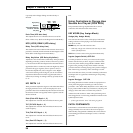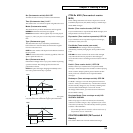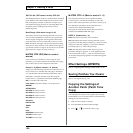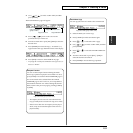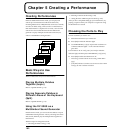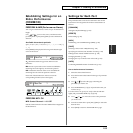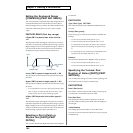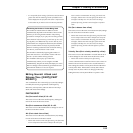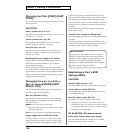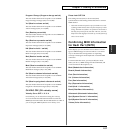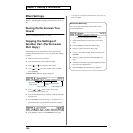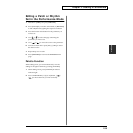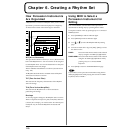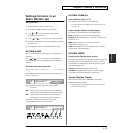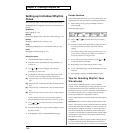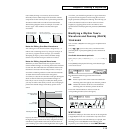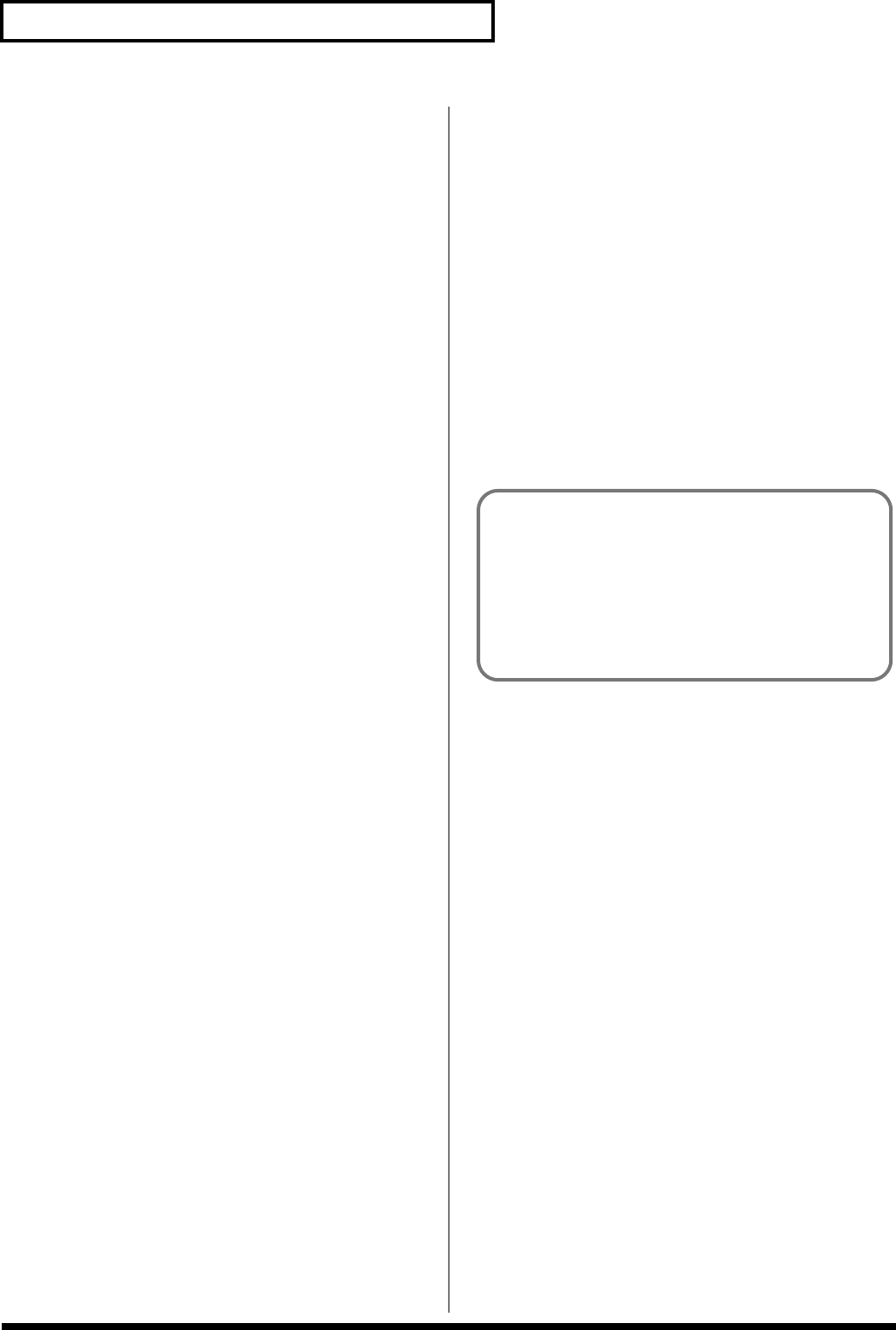
106
Chapter 5 Creating a Performance
Changing the Pitch ([PART]-[PART
PITCH])
You can set the pitch and bend range each Part will use when
playing its sound.
PART PITCH
Octave (Octave shift) -3–0–+3
This adjusts the pitch of the Part’s sound up or down in units
of an octave (+/-3 octaves).
Coarse (Coarse tune) -48–+48
This adjusts the pitch of the Part’s sound up or down in
semitone steps over a range of +/-4 octaves.
Fine (Fine tune) -50–+50
This adjusts the pitch of the Part’s sound up or down in 1-
cent steps (1/100th of a semitone) over a range of half a
semitone up or down.
BendRng (Pitch bend range) 0–24/PATCH
This specifies the amount of pitch change that will occur
when you move the Pitch Bend Lever. It overrides the
sound’s pitch-bend settings.
The amount of pitch change downward or upward that
occurs when the lever is tilted is the same for both its left and
right directions (or down and up on some MIDI controllers).
When a PATCH is selected, the bend range settings for the
assigned Patch will have effect.
Changing the way in which a
Part will sound([PART]-[PART
MONO/POL])
You can set the MONO/POLY, Legato and Portament each
Part will use when playing its sound.
Mno/Pol (Part Mono/Poly)
This sets how the Patch’s notes will be played. The SOLO
setting is effective when playing a solo instrument Patch
such as sax or flute.
MONO:Only one note will sound at a time.
* While only a single note will sound, that note may, as usual,
consist of multiple Tones.
POLY:Two or more notes can be played simultaneously.
Legato (Legato Switch) OFF/ON/PATCH
Turn this parameter on when you want to use the Legato
feature and off when you don’t. Legato is a function that
works only when the Key Assign Mode is MONO. When
Legato is ON, pressing one key when another is already
pressed causes the currently playing note’s pitch to change to
that of the newly pressed key while continuing to sound.
This can be effective when you wish to simulate performance
techniques such as a guitarist’s hammering on and pulling
off strings.
When a PATCH is selected, the settings for the assigned
Patch will have effect.
Porta Sw:Time (Portament Switch:Time)
Specify whether the portament effect will be applied (ON) or
not (OFF).
And when portament is used, this specifies the time over
which the pitch will change. Higher settings will cause the
pitch change to the next note to take more time.
Establishing a Part’s MIDI
Settings (MIDI)
PART MIDI
Channel (MIDI channel) 1–16
This sets the MIDI channel to which the Part will respond.
Rx Sw (Receive switch) OFF/ON
This enables (ON) or disables (OFF) the Part’s response to
received MIDI messages.
Mute Sw (Mute switch) OFF/ON
This silences, or “mutes,” the Part when set to ON.
* Although the Part’s sound is muted, the Part still receives
MIDI messages. Thus, even when the Part’s sound is switched
on or off during playback a song, the Part continues to keep up
with the latest received MIDI data.
CH RxSWITCH (CH receive switch)
Bank Select (Receive bank select switch)
This sets whether the Part will respond to received MIDI
Bank Select messages (ON) or not (OFF).
What is Portament?
Portamento is an effect which smoothly changes the
pitch from the first-played key to the next-played key.
When Key Assign is SOLO, applying portamento will
produce an effect similar to the slide performance
technique of a violinist. Portamento can also be applied
when Key Assign is polyphonic (POLY).



